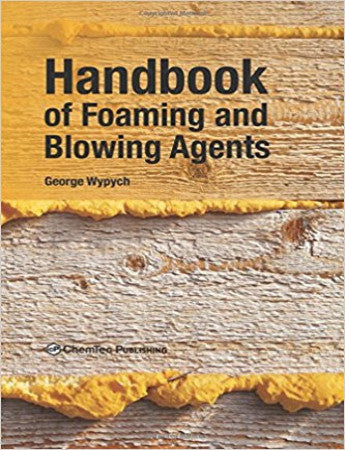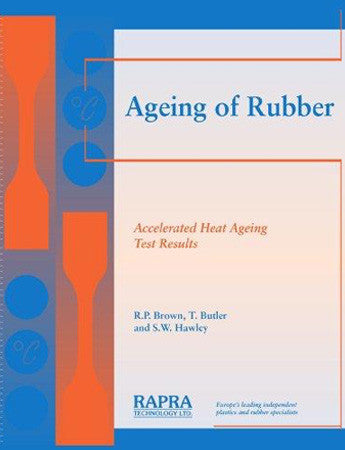Foaming processes can be controlled by many parameters, including type, amount of foaming agent, additives, saturation pressure, desorption time, die pressure, die temperature, feed ratio, gas contents, its flow rate and injection location, internal pressure after foaming, mold pressure, mold temperature, viscosity of composition under processing conditions, surface tension, time-temperature regime, and many other.
The selection of formulation depends on mechanisms of action of blowing agents and foaming mechanisms, as well as dispersion and solubility of foaming agents and foam stabilization requirements.
This book contains information on foaming technology which has been discussed in fourteen chapters each devoted to a different aspect of the foaming process.
Properties of 23 groups of blowing agents have been discussed in Chapter 2. In the tabulated form, the typical range of technical performance is given for each group of foaming agents, including general properties, physical-chemical properties, health and safety, environmental impact, and application in different products and polymers.
Chapter 3 discusses mechanisms of foaming with the use of solid blowing agents which are decomposed to the gaseous products by application of heat, production of gaseous products by chemical reaction, and foaming by gasses and evaporating liquids. All information is illustrated by diagrams placed close to the text of discussion.
Dispersion of solid foaming agents and solubility of liquid and gaseous products is a subject of Chapter 4 with special emphasis on uniformity of foam produced and parameters of the foaming process. Evaluation of importance of parameters of foaming, included in chapter 5, contains influence of the amount of blowing agent, clamping pressure, delay time, desorption time, die pressure, die temperature, gas content, gas flow rate, gas injection location, gas sorption and desorption rates, internal pressure after foaming, mold pressure, mold temperature, operational window, plastisol viscosity, saturation pressure, saturation temperature, screw revolution speed, surface tension, time, temperature, and void volume.
Foam stabilization methods for different blowing agents are included in Chapter 6. These methods help to obtain uniform structure of a foam and reinforce cell walls. Seven different foam efficiency measures are presented in Chapter 7. Morphology of foams is discussed in Chapter 8, including production of bimodal foams, cell density, cell morphology, cell size, cell wall thickness, closed and open cell formation and frequency, core and skin thickness, and morphological features.
Production of foam by different methods of plastic processing, such as blown film extrusion, calendering, clay exfoliation in production of reinforced composites, compression molding, depressurization, extrusion, free foaming, injection molding, microwave heating, rotational molding, solid-state foaming, supercritical fluid-laden pellet injection molding foaming, thermoforming, UV laser, vacuum drying, and wire coating are discussed in Chapter 9.
Selection of foaming agents, their quantity and technology of processing for 44 polymers are included in Chapter 10. Chapter 11 discusses the influence of 15 groups of additives on the foaming outcome. Chapter 12 gives information on the effect of foaming on 24 parameters of physical-mechanical properties of foams, setting the standard of achievable performance. Some important and exclusive analytical techniques useful in foaming are discussed in Chapter 13. In the last chapter, health and safety and environmental impacts of foaming processes are discussed.
This book has also companion Databook of Blowing and Auxiliary Agents which contains data for these diverse chemical components of formulations of foamed materials and reveals their roles in foaming processes. There is no information which is repeated in both books. They do complement each other giving reader comprehensive information on the subject never published before with such a breadth.
1 Introduction
2 Chemical origin of blowing agents
3 Mechanisms of action of blowing agents
4 Dispersion and solubility of foaming agents
5 Parameters of foaming
6 Foam stabilization
7 Foaming efficiency measures
8 Morphology of foams
9 Foaming in different processing methods
10 Selection of blowing agents for different polymers
11 Additives
12 Effect of foaming on physical-mechanical properties of foams
13 Analytical techniques useful in foaming
14 Health and safety and environmental impact of foaming processes
Index




